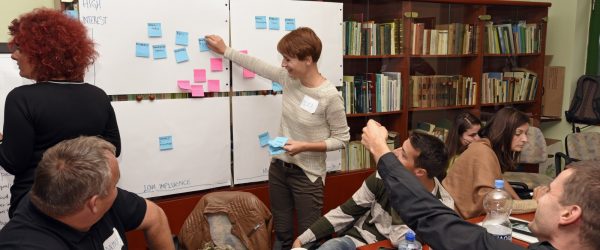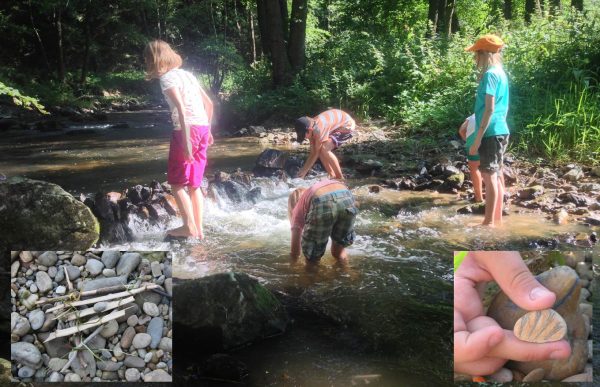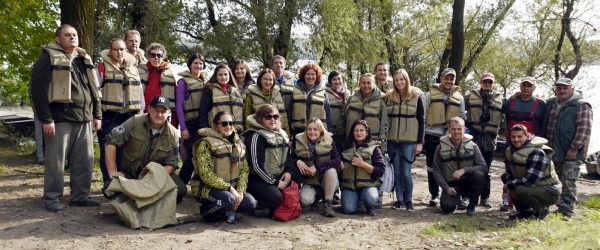Coop MDD
For more than 10 years, Austria, Slovenia, Croatia, Hungary and Serbia work together to jointly protect the free-flowing river corridor of Mura, Drava, and Danube.
The world’s first 5-country Transboundary Biosphere Reserve will protect core and buffer zones through existing Nature Parks, National Parks and Natura 2000 areas.
Within coopMDD, the Protected Area Administrations responsible for the management of those protected areas worked together in one project team and prepared for the future coordinated nature management.
This project and the resulting cooperation is of great significance, as animals and plants living along and inside the joint rivers as well as the rivers itself do not respect national borders. Natural habitats including floodplain forests and spawning sites are spread across the five-country Biosphere Reserve Mura-Drava-Danube.
River management in one country influences flood protection in the other: up- and downstream as well as on the opposite riverbank.
As such the protection and restoration needs to be done on a transboundary level and in a harmonised way.
Project goals
Coordinating and harmonizing the protection and the management of this joint river ecosystem over five countries is a big challenge. Here comes the Interreg project coopMDD: It brought together Protected Area Administrations of all countries to prepare for a future joint management. A common basis on river management, forestry, agriculture, hunting, fishery and tourism were developed.
The Management Guidelines jointly created within coop MDD include common visions, common goals and common principles for the development of the natural river dynamics and sustainable development in the river corridor.
Within the TBR MDD, rivers should be able to choose their river bed freely; dynamic processes are desired – in accordance with flood protection measures and nature-friendly use of natural resources.
These Guidelines form an important basis towards a harmonised management of protected areas. Not all measures can be implemented straightaway, but the project produced a strategic yet concrete planning document for the years to come: in case of changes in national legislation, guidelines and management plans, or for development of follow-up projects, partners agreed to orient towards the jointly developed Management Guidelines.
So called “Rivers’cools” were established in order to get local people on board. The concept for the network of these outdoor learning centres was jointly developed by all project partners.
Local people and visitors should know about and experience the natural values of the "Amazon of Europe" , so that the planned TBR MDD finds acceptance within the population. While each River School highlights a special topic – e.g. life on a border river or specific endangered species - common elements will be found in each River School. All Rivers’cools were established in cooperation with local kindergardens or schools.
A jointly developed action plan supports the implementation of management Guidelines and Rivers’cools in all five countries. Local action plans were established in cooperation with local stakeholders. They prepare concrete implementation actions in the fields of stakeholder involvement for the protection of the TBR MDD, river and floodplain restoration, and the development of environmental education actions.
Financing
The project coop MDD is co-funded by the European Union within the Danube Tansnational Programme with a total budget of 2,15 million Euro for 11 project partners. Lead partner WWF Austria was responsible for the coordination of the project.
The project lasted for 2,5 years: January 2017 until June 2019
Project partners
The project team consisted of 11 full project partners in 5 countries within the project area. 12 associated strategic partners completed the team.
In order to harmonize the management but also strengthen the dialogue with the different stakeholders, partners represent a mix of different organizations.
Project partners
- WWF Austria – World Wide Fund for Nature Austria
- Office of the State Government of Styria, Department 13 – Environment and Spatial Planning, Section Nature Conservation
- Institute of the Republic of Slovenia for Nature Conservation
- Municipality Velika Polana
- Public Institution for Nature Protection of Virovitica-Podravina County
- Public Institution for Nature Protection of Osijek-Baranja County
- Public Institution for Management of Protected Natural Areas in the Koprivnica Križevci County
- Balaton-felvidéki National Park Directorate
- Vojvodina Šume Public Institution
- Institute for Nature Conservation of Vojvodina Province
- WWF Adria - Association for the protection of nature and conservation of biological diversity
Associated partners
- Federal Ministry of Agriculture, Forestry, Environment and Water Management, Division I/8, National Parks, Nature Conservation and Species Protection, Austria
- DANUBEPARKS – Danube River Network of Protected Areas
- Ministry of the Environment and Spatial Planning, Environment Directorate, Slovenia
- Medjimurska Priroda – Public Institution for Nature Protection
- Public Institution for Management of Protected Natural Areas in Varaždin County
- Public Institution Nature Park Kopački Rit
- The City of Sombor
- UNESCO Regional Bureau for Science and Culture in Europe
- International Commission for the Protection of the Danube River
- EuroNatur Foundation
- Duna-Dráva National Park Directorate
- Austrian National Committee for UNESCO’s Man and the Biosphere Programme
On the official project website within the Danube Transnational Programme, the project outputs, newsletter, pictures, etc., can be found.


